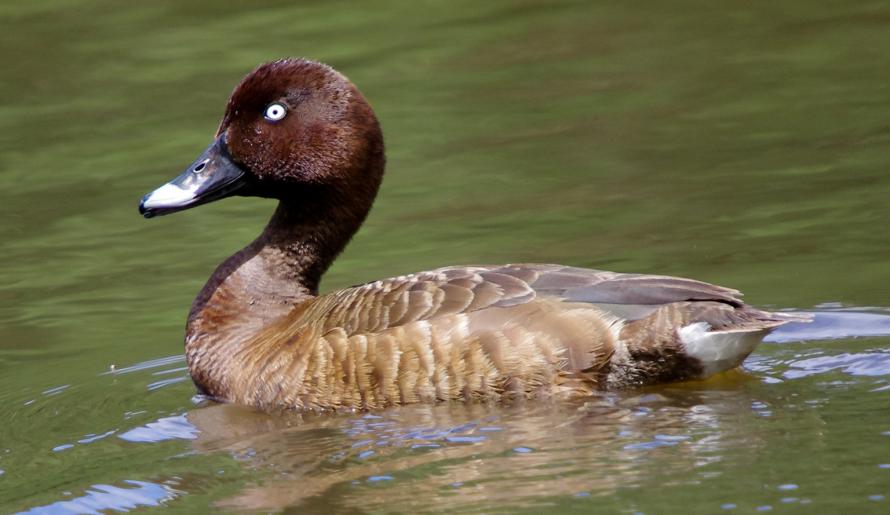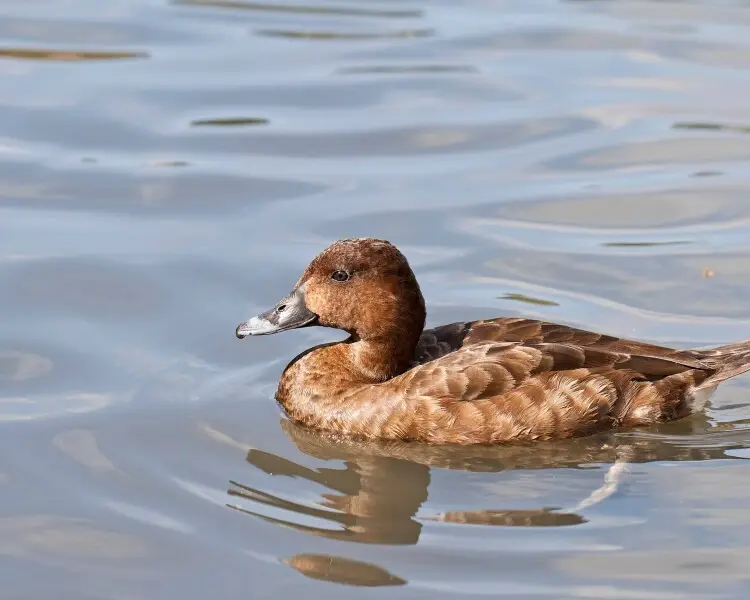Hardhead


Scientific Name
Aythya australis
Alternative Names
Hardhead, White-eyed Duck
Measurements
| Feature | Male | Female |
|---|---|---|
| Length | 42–59 cm (17–23 in) | 42–59 cm (17–23 in) |
| Weight | 525–1,100 g (18.5–38.8 oz) | 525–1,100 g (18.5–38.8 oz) |
| Wingspan | 65–70 cm (26–28 in) | 65–70 cm (26–28 in) |
Status
The Hardhead is Australia’s only true diving duck. It’s common across the wetter regions of the country, especially in the southeast and along coastal wetlands. Sometimes these ducks travel great distances, turning up in New Guinea, New Zealand, and nearby Pacific Islands. Because they’re widespread and adaptable, the species is listed as Least Concern on the IUCN Red List.
Identification
A compact brown duck with a rounded head and rich chocolate coloring all over. The male’s bright white eyes stand out clearly, while the female’s are brown. Both have dark beaks built for diving and feeding underwater. The wings are dark above with white underparts and trailing edges, which flash when they fly.
Voice
Usually quiet, the male gives a soft, wheezy whistle or gentle “whirr,” while the female’s call is a louder, rattling “gaark.”
Diet
Hardheads dive deeply for their food, using their webbed feet to slip smoothly below the surface. They eat a mix of small aquatic creatures like insects and crustaceans, along with seeds and water plants.
Distribution
Most common in southeastern Australia, especially around the Murray–Darling Basin and coastal lakes. They wander widely after breeding and sometimes appear in distant regions, even reaching islands in the Pacific.
Habitat
Prefers deep, still freshwater lakes, swamps, and rivers. Although they may visit flooded grasslands or smaller streams, they tend to avoid coastal saltwater areas. Unlike some ducks, they rarely come onto land or perch in trees.
Breeding
Nests are built near water, often hidden among reeds. The female lays a clutch of 9–13 eggs and takes full care of incubation and ducklings.
Conservation
Populations remain stable across most of their range. However, they depend on healthy wetlands, so drought and habitat loss can affect local numbers.
